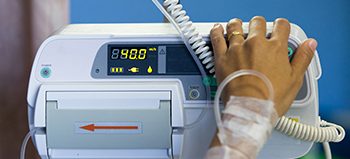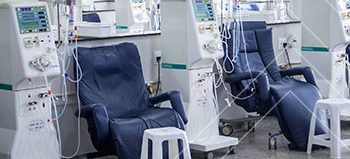Overview of This Research:
The study involved four major activities in estimating the current market size for sleep apnea devices. Exhaustive secondary research was done to collect information on the market and its different sub-segments. The next step was to validate these findings, assumptions, and sizing with industry experts across the value chain through primary research. Both top-down and bottom-up approaches were employed to estimate the complete market size. Thereafter market breakdown and data triangulation was used to estimate the market size of segments and sub-segments
Primary Research:
The sleep apnea devices market comprises several stakeholders such as sleep apnea devices and related device manufacturing companies, medical centers, government research organizations, hospitals and clinics, research and consulting firms, medical devices companies, regulatory bodies, insurers, credentialing organizations, medical societies, physician associations. Various primary sources from both, the supply and demand sides of the market were interviewed to obtain qualitative and quantitative information.
Download PDF Brochure@
https://www.marketsandmarkets.com/pdfdownloadNew.asp?id=719
Secondary Research:
In the secondary research process, various secondary sources such as Hoovers, D&B, Bloomberg Business, and Factiva have been referred to, so as to identify and collect information for this study. These secondary sources included annual reports, press releases & investor presentations of companies, white papers, certified publications, articles by recognized authors, gold standard & silver standard websites, regulatory bodies, and databases.
Home care settings/individuals projected to grow at the highest CAGR in the global sleep apnea devices market during the forecast period
On the basis of end user, the sleep apnea devices market has been segmented into sleep laboratories & hospitals and home care settings/individuals. The sleep laboratories & hospitals segment accounted for the largest share of the market in 2018, while home care settings/individuals end-user segment is projected to grow at the highest CAGR during the forecast period. This high growth is likely driven by factors such as the rising preference for home sleep testing by both patients and private insurance companies, along with the favorable reimbursement scenario for home sleep testing.
Recent Developments:
# In 2019, ResMed (US) launched AirFit N30i, its first top-of-head-connected nasal CPAP mask, across the US with a newly designed nasal cradle cushion that sits just under the wearer’s nose.
# In 2016, Koninklijke Philips (Netherlands) launched its Dream Family solution which comprises of a DreamWear mask, DreamStation PAP device, and DreamMapper patient engagement app.
North America is expected to dominate the sleep apnea devices market during the forecast period
On the basis of region, North America accounted for the largest share of the global sleep apnea devices market in 2018, whereas, the Asia Pacific region registered the highest CAGR during the forecast period. North American accounted for the largest share owing to factors like an increase in the number of patients diagnosed with sleep apnea in the region, growth in awareness initiatives being taken by various government and non-government organizations, availability of adequate funding for research and development, and substantial growth in the usage of oral appliances in the region.
Request Sample Pages@
https://www.marketsandmarkets.com/requestsampleNew.asp?id=719
Global Leaders:
Major players operating in the sleep apnea devices market include ResMed (US), Koninklijke Philips (Netherlands), Fisher & Paykel Healthcare (New Zealand), SomnoMed (US), Oventus Medical (Australia), Compumedics (Australia), Löwenstein Medical (Germany), Drive DeVilbiss Healthcare (US), BMC Medical (China), Braebon Medical (Canada), and Panthera Dental (Canada).
Analysis of the market developments between 2016 and 2019 revealed that several growth strategies such as partnerships & agreements, expansions, service launches, and strategic acquisitions were adopted by the market players to strengthen their product portfolios and maintain a competitive position in the sleep apnea devices market.


